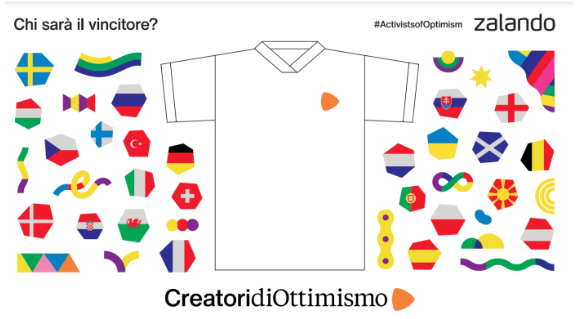Can a brand appear to be the sponsor of a major sporting event without actually being one? And more importantly: can it do so without facing sanctions? These questions were answered by the Italian Council of State in ruling no. 3118 of April 11, 2025, which upheld the fine imposed on Zalando SE for an advertising campaign launched just before the UEFA Euro 2020 football championship. The ruling explores the intersection of law and marketing, and represents Italy’s first legal reference regarding the phenomenon known as ambush marketing.
What is ambush marketing?
Ambush marketing refers to a practice whereby a company seeks to benefit from the visibility of an event—sporting, cultural, or institutional—without being an official sponsor or having any authorization. It’s a form of opportunistic communication that leverages the symbolic and media-driven momentum of the event, creating the false impression of a formal involvement.
To counteract such practices, the Italian legislature introduced a specific provision: Article 10 of the Italian Decree-Law No. 16/2020, originally passed in the context of the Milano-Cortina 2026 Olympic and Paralympic Games and the ATP Finals in Turin. The article explicitly prohibits four types of conduct, including the one relevant to the Zalando case: the creation of even an indirect link between a brand and an event, if that link is likely to mislead the public regarding the identity of official sponsors.
Importantly, a violation does not require the use of registered logos, protected names, or official symbols. It is enough if the overall message alters the perception of the average consumer, making them believe there is a sponsorship relationship that does not exist. This is defined as an administrative offense involving a concrete risk, punishable by fines of up to €2.5 million, and falls under the enforcement authority of the Italian Competition Authority (AGCM).
The Zalando case: an ad “too close” to the event
In June 2021, in Rome’s Piazza del Popolo—already vibrant with UEFA Euro 2020 preparations—Zalando SE displayed a billboard featuring its logo, a plain white jersey, and the twenty-four flags of the nations participating in the tournament, along with the tagline: “Chi sarà il vincitore?” (who will be the winner?).

The AGCM had no doubts: although the ad made no explicit reference to the event, it was capable of generating a misleading association between Zalando and the championship in the public’s mind. It was a textbook example of ambush marketing through indirect association. No UEFA trademarks were used, but the setting and combination of symbols illegitimately exploited the visual impact and perceived identity of the event. As a result, Zalando was fined €100,000.
Zalando appealed, arguing that:
- the message was not misleading and referenced no third-party rights;
- the billboard was removed before the tournament began;
- the campaign had a social aim—in particular, minority inclusion;
- the alleged misunderstanding was not supported by any objective evidence.
However, neither the Lazio Regional Administrative Court (TAR) nor the Council of State accepted these defenses.
Italy’s first ruling on ambush marketing
Following the TAR rejection, the Council of State confirmed the legitimacy of the fine. According to the Council, Zalando’s message met the conditions prohibited under Article 10, paragraph 2, letter a) of Italian Decree-Law 16/2020: indirect association between a brand and an event, with the potential to mislead consumers about sponsorship status.
Even without official symbols, the combination of visual elements (shirt and flags), physical placement (near the Football Village), and slogan was enough to lead the average observer to believe a sponsorship existed. The Council emphasized the concept of “communicative framing”, clarifying that advertisements must be interpreted holistically—considering location, timing, and symbolic elements. In other words, what matters is the effect, not just the literal content.
The public is not made up of lawyers, but of consumers exposed to quick, visual, and simplified messages. In this context, a shirt, a flag, a slogan, and a specific location can be enough to falsely imply a sponsorship.
Of note is the section addressing the campaign’s social purpose. The Council acknowledged that an inclusive message can legitimately inform a communication strategy, but stressed that such intent only became clear in a later version of the billboard—insufficient to neutralize the misleading impact of the original.
The key takeaway: wrongdoing arises from the potential to deceive, and that potential is evaluated based on real-world communication dynamics—not stated intentions or formal omissions.
A lesson for businesses and marketing professionals
With this ruling, the Council of State provides a clear interpretive guideline, warning businesses, agencies, and creative professionals. The core principle is simple: it’s not just what you say, but how and where you say it. The risk of breaking the law isn’t tied to forbidden words or logos, but to the overall perception your message creates in the mind of the average consumer.
Evoking a sporting event cannot, in itself, be considered neutral. When that event is protected by an exclusive rights system—rights for which official sponsors paid dearly—any unauthorized association may constitute unfair competition, even if unintentional.
It’s lawful to talk about sports. It’s legitimate to build inclusive narratives. But it’s not acceptable to imply—even visually—a sponsorship that doesn’t exist, especially when located physically or symbolically close to the event.
In short, ambush marketing can occur in subtle, implicit, or merely suggestive forms—if the context makes the confusion plausible. And invoking constitutionally protected freedoms is neither sufficient nor effective if the message compromises market transparency and the contractual value of official sponsorships.
In this context, the law does not restrict entrepreneurial freedom—it defines its boundaries, making authentic, effective, and compliant communication possible. For businesses, the message is clear: creativity wins only when it plays by the rules of the market.
© Canella Camaiora S.t.A. S.r.l. - All rights reserved.
Publication date: 30 May 2025
Last update: 11 June 2025
Textual reproduction of the article is permitted, even for commercial purposes, within the limit of 15% of its entirety, provided that the source is clearly indicated. In the case of online reproduction, a link to the original article must be included. Unauthorised reproduction or paraphrasing without indication of source will be prosecuted.

Margherita Manca
Lawyer at The Canella Camaiora Law Firm, member of the Milan Bar, she specialises in industrial law.
